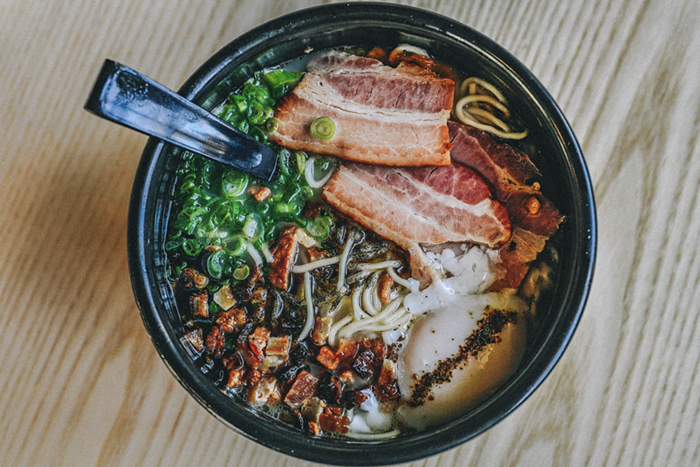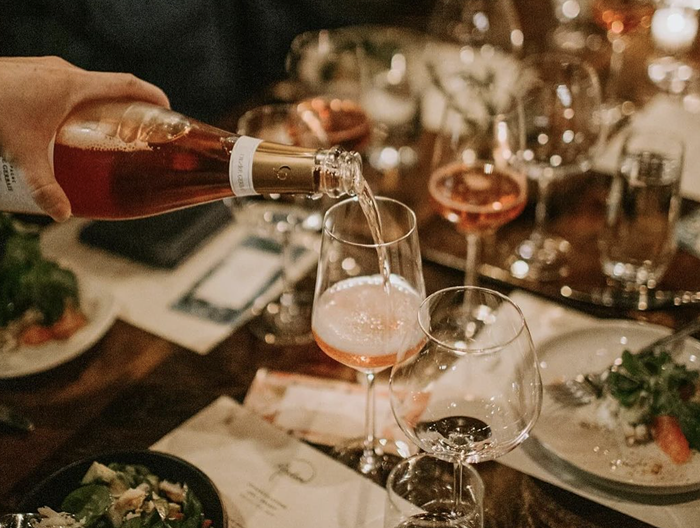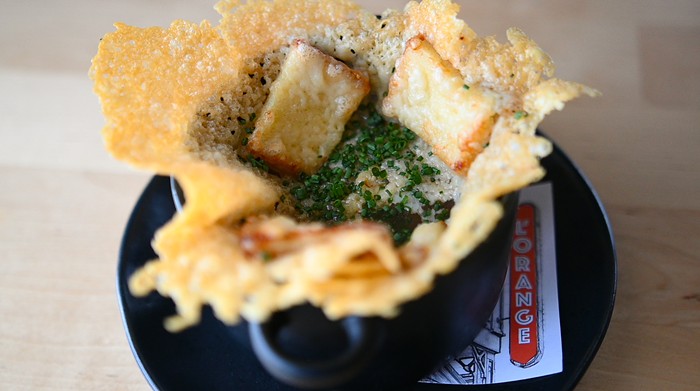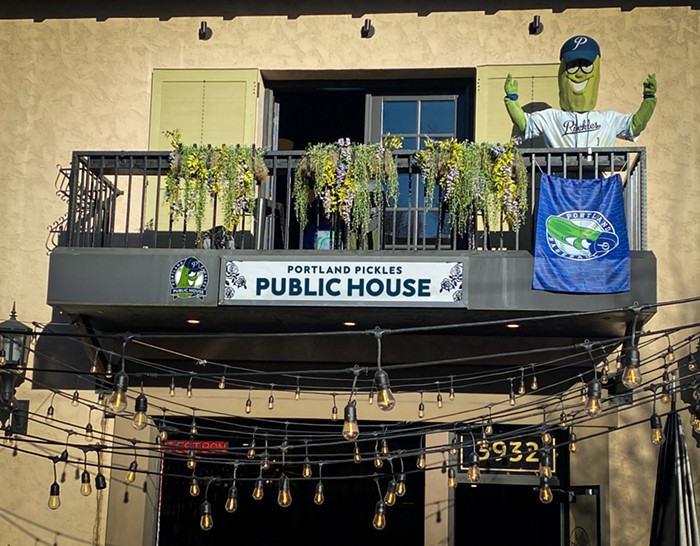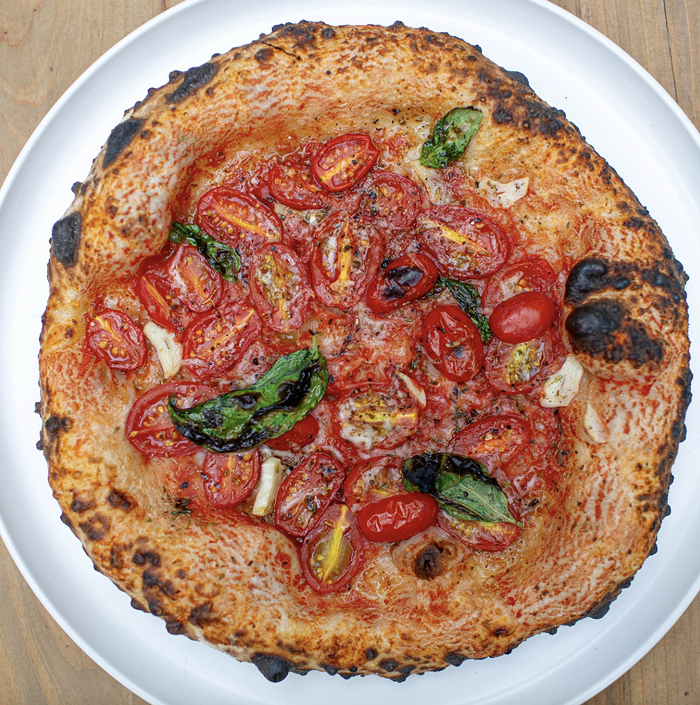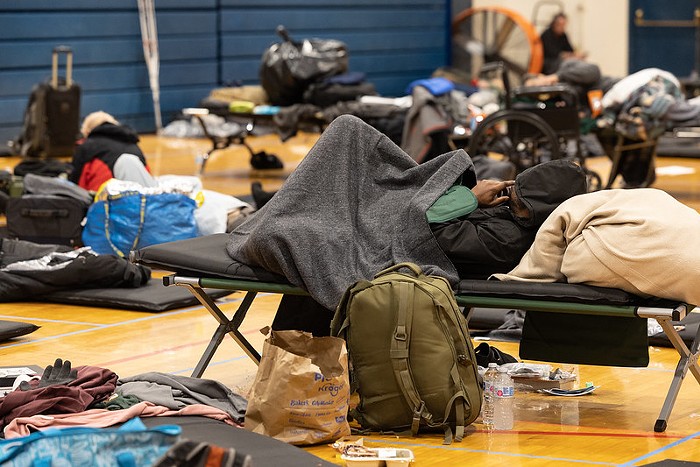Last Thursday, I went to the place where food is invented. Not cooked, not grown. Invented. It's a nondescript office building called the Food Innovation Center located on the more industrial edge of the Pearl. I snagged a behind the scenes tour as part of the 4th National Farm to Cafeteria conference, which last weekend brought hundreds of food policy advocates and school lunch ladies to Portland.
Food is a huge industry in Oregon, raking in $10 billion annually and employing 20,000 people, according to Cory Schrieber of the Oregon Department of Agriculture. Right now it's also a hot political topic. Public schools and Oregon farms are trying to get funding to help public schools buy local foods for breakfasts and lunches, rather than trucking in the typical glop from thousands of miles away. House Bill 2800 would give public schools 15 cents a meal to use on local foods, but in a year of insanely tight budgets, getting the state to shell out an estimated $22 million for local foods will be tough.
Which brings us back to the Food Innovation Center. The building has a focus group room with a one way mirror, darkened cubicles for "sensory testing" and a full working kitchen stocked with spices and lab-like measuring tools. This is where beer chips were born. And the much more regrettable carbonated fruit product ("Fizzy Fruit! Popping with flavor!"). On the tour, I met Sarah Drew, a nutrition teacher for HealthCorps at a public school in Long Island, NY. Drew is trying to get her cafeteria to use more local and healthy foods, but it's tough changing anything about school bureaucracy, especially with little funding. "I don't like it when the whole meal is the same color," says Drew, shuddering as she recalls the worst breakfast the school serves — sugar-laden French toast with floppy bacon the kids dip in syrup.
Outside Salem, a farmer named Matt shows off a different option for school lunches. The 5th generation farmer welcomed us into his cement-floored farmstore with free marionberry crumble and went on to explain how he delivers thousands of pounds of watermelon, pears and other produce to schools around the state (including private colleges like Reed). "The biggest problem is I can't grow enough," says Matt, noting that the farthest his food travels to schools is 120 miles. His farm also supplies the public school's Harvest of the Month program — right now the schools pool their seven cents per meal from Kaiser to provide one meal a month made with all local foods.

"It's really hard to get nutrition lessons into the classroom because teachers are spending so much time on testing and we have one of the shortest school years in the country," Kristine Obbink, Nutrition Services Director of Portland Public Schools told me as we stood talking on the wet, gray farmland. In HB 2800 doesn't pass, says Obbink, "We'll be back to ground zero, where we were before."
Below the cut: More about the Oregon's funding for local foods in schools, plus a trip to the vegan school lunch chili factory!
Part of the problem with using local foods is that all food made for Portland Public Schools can't be cooked onsite. Since most schools don't have kitchens, all lunch food has to be just reheat and serve. According to Obbink, PPS serves vegan chili every three weeks. That chili is made of all "sustainably-certified" ingredients and processed by Truitt Brothers down in Salem.
The moment I step off the bus at the Truitt Brothers factory in Salem, I can smell the chili. After donning white lab coats and embarrassing hair nets, I'm allowed to enter the chili-making factory floor. The place is deafening and reeks of onions. A giant steaming metal machine rises high over my head, next to it are four-foot tall R2D2-like metal bins of tomatoes and onions. A robotic arm latches onto the tomato bin, lifts it slowly 15 feet into the air and dumps it through a metal grate into a bubbling chili mixture. On a nearby conveyor belt, a sheet of water pours down into little cups of frozen chili that rush by at 400 cups a minute.

As I found out, "sustainable" doesn't mean small scale. Rod Friesen, Truitt Brothers' national accounts manager, explains what the Food Alliance "sustainable" ranking means, while pointing out the seal on one of the company's giant cans of pears. It doesn't mean organic. But it does mean limited pesticide use, along with good employee relations, low environmental impact and good waste management. "Distributors demanded sustainable certification but didn't want to pay extra for it. We realized we already doing a lot of the things to qualify as sustainable, so we said, 'If we're going to be doing this, let's do it under our own brand,'" says Friesen.

In September, Portland and Gervais school districts won a one year grant from Kaiser Permanente to give 91 schools seven cents per lunch to spend on local foods. That doesn't sound like a lot, but from September to December, that worked out to be $66,193 spent on local foods for public school kids. Now Portland-based EcoTrust and other green groups are pushing the legislature to pass House Bill 2800, which would give schools 15 cents per meal to spend on local foods. While a similar bill last year "languished in ways and means" this year EcoTrust and friends and hope they can get some traction because of the success of the privately-funded farm to school program. A public hearing is coming up for HB 2800 on April 2nd.
As for my own lunch, a version of an actual lunch prepared in Portland Public Schools with all local sustainable ingredients, it was dang tasty. But like any school kid, I went straight for the Oregon-grown cherry cobbler, then the hearty vegan chili and left the green bean salad untouched.


